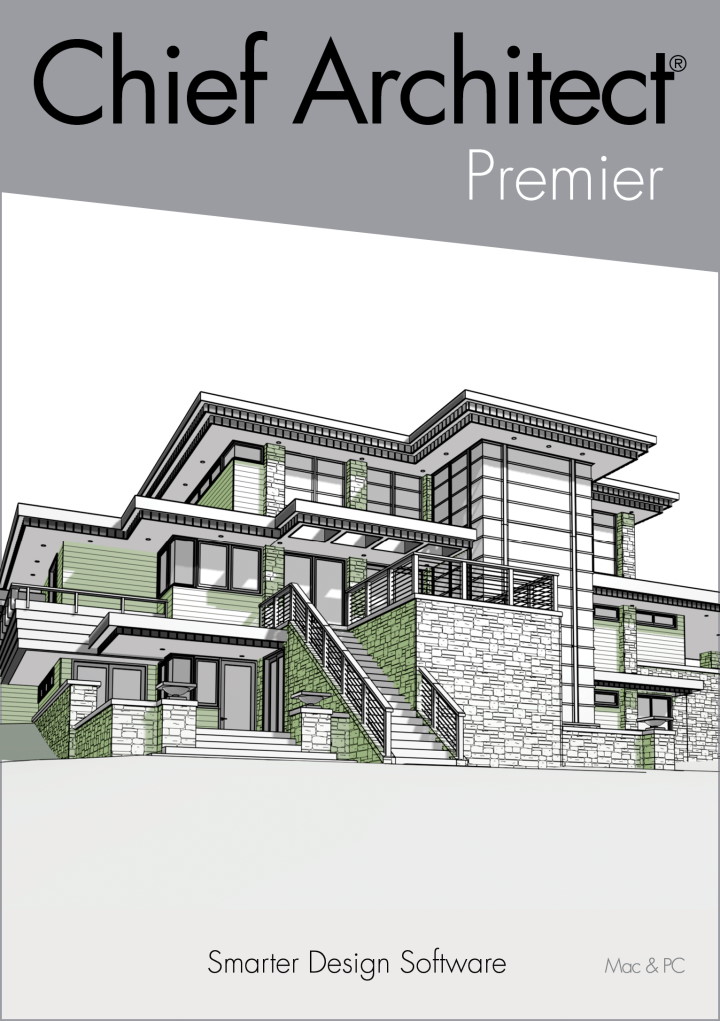Architect Collaboration Tips for Working with Contractors and Contractors
Architect Collaboration Tips for Working with Contractors and Contractors
Blog Article
Understanding the Diverse Job Paths Available for Aspiring Architect
As a hopeful Architect, you have a world of job paths waiting for you. Whether you're drawn to conventional style or the subtleties of sustainable style, there's a niche that straightens with your passions.
Standard Design: Creating Structures and structures
Typical architecture concentrates on making buildings and structures that blend performance with visual charm. As you explore this field, you'll value the elaborate equilibrium in between form and purpose. You'll discover to attract inspiration from historical styles, integrating elements like proportion, products, and craftsmanship. Your styles can mirror cultural heritage, showcasing regional customs while meeting contemporary needs.
You'll develop abilities in composing, model-making, and website evaluation, permitting you to picture and interact your concepts effectively. Engaging with customers, you'll need to comprehend their vision and translate it right into possible layouts.
Furthermore, building codes and sustainability techniques are necessary in your work, guaranteeing your structures are ecologically friendly and safe. As you expand in your career, you'll locate chances in domestic, commercial, or even restoration projects, each offering special difficulties. Accepting typical design leads the way for a meeting career that admires the past while forming the future.
Urban Preparation: Forming Neighborhoods and Public Spaces
As an aspiring Architect, you can play a vital role as a city planner, changing exactly how neighborhoods work and communicate. By using community engagement methods, you'll assure that citizens have a voice in shaping their atmosphere. And also, integrating sustainable layout concepts will aid create areas that not just satisfy today's needs however also protect the future.
Role of Urban Planners
While several may think of designers as the single enthusiasts behind structures, metropolitan planners play an important duty fit the broader landscape of areas and public rooms. They examine land usage, zoning legislations, and neighborhood needs to produce sustainable environments that boost quality of life. By collaborating with numerous stakeholders, you'll aid develop parks, transportation systems, and houses that advertise social interaction and accessibility. Urban coordinators likewise concentrate on ecological considerations, making certain that developments integrate environment-friendly rooms and support biodiversity. Your proficiency in spatial layout and area dynamics allows you to envision future development while protecting cultural heritage. In this essential role, you'll directly affect how people experience their environments, making every job an opportunity for positive modification.
Area Involvement Methods
Reliable community interaction methods are crucial for metropolitan planners to assure that the voices of locals are listened to and valued in the planning process. To foster significant dialogue, you must prioritize open discussion forums and workshops where neighborhood members can share their ideas and worries. Usage surveys and social media sites to get to a broader audience, making certain varied perspectives are included. Working together with local companies can boost trust and assist in deeper connections. It is necessary to supply clear details concerning suggested jobs and decision-making procedures, enabling residents to feel informed and encouraged. By actively including and paying attention responses, you'll create spaces that show the area's requirements, eventually resulting in more sustainable and effective urban settings. Accept transparency and continual discussion for long lasting effect.
Sustainable Layout Concepts
When designing city spaces, integrating lasting style concepts is critical for creating environments that flourish both ecologically and socially. Consider integrating eco-friendly spaces, like parks and yards, to enhance biodiversity and boost air quality.
Designing with water preservation in mind is additionally key-- believe about rain yards and absorptive surface areas to manage stormwater. Entailing area participants during the planning process assurances that the rooms you develop fulfill their needs and urge social communication. By accepting these principles, you'll contribute to lively, lasting city landscapes that benefit everybody.

Landscape Style: Developing Lasting Exterior Atmospheres
As you check out landscape design, you'll uncover crucial design principles that develop practical and lovely outdoor rooms. Sustainable practices play a crucial role in making certain these settings prosper while lessening ecological influence. And also, you'll locate a variety of job opportunities that permit you to make a genuine difference in exactly how people engage with nature.
Layout Principles in Landscape
Understanding design concepts in landscape architecture is vital for creating lasting exterior settings that harmonize with nature. You'll need to ponder components like scale, percentage, and equilibrium to assure your layouts really feel cohesive and inviting. In addition, pay focus to seasonal changes, developing with products that match the surroundings year-round.
Lasting Practices Overview
Sustainable techniques in landscape architecture not only concentrate on looks but likewise focus on ecological health and source conservation. By integrating native plants, you boost biodiversity and decrease the requirement for chemical fertilizers and chemicals. Applying reliable irrigation systems helps save water and lessens overflow, safeguarding neighboring environments. You can create spaces that promote dirt health and wellness, such as exercising and using organic products permaculture principles. In addition, integrating eco-friendly infrastructure, like rainfall gardens and permeable pavements, help in stormwater administration and lowers urban warmth. You contribute to a healthier earth and provide spaces that cultivate community connection when you have a peek here develop exterior settings with sustainability in mind. Inevitably, these techniques assure your layouts benefit both individuals and the atmosphere for years to come.
Occupation Opportunities Exploration
With a strong foundation in lasting methods, landscape architecture supplies a selection of profession courses that enable you to make a significant effect on the environment. You could function as a landscape developer, producing aesthetically pleasing and useful outside spaces, or specialize in environmental repair, assisting to revive damaged ecosystems. Urban organizers usually work together with landscape engineers to produce eco-friendly rooms in metropolitan settings, enhancing city livability. If you're enthusiastic concerning education and learning, think about coming to be a landscape design instructor, motivating future generations. In addition, you may deal with nonprofits focused on ecological sustainability or participate in research study to introduce new techniques. Each course not just forms attractive environments however likewise promotes a healthier earth for future generations.
Sustainable Design: Concentrating on Eco-Friendly Practices
As you discover your occupation in architecture, embracing green methods can set you apart in an affordable field. Sustainable style concentrates on creating structures that lessen ecological impact while enhancing resident health. By including eco-friendly materials, energy-efficient systems, and lasting building strategies, you'll add to a greener future.
Start by gaining expertise of environment-friendly qualifications like LEED or BREEAM, which can strengthen Discover More your credentials. Think about how all-natural light, air flow, and thermal performance can enhance layout. Team up with engineers and environmental specialists to innovate remedies that lower waste and save sources.
Don't neglect the value of area involvement-- appealing neighborhood stakeholders can motivate designs that harmonize with the setting. As customers significantly focus on sustainability, your competence in environmentally friendly methods will not only attract jobs however likewise satisfy your interest for responsible architecture. Embrace this vital aspect of the occupation, and enjoy your occupation prosper.
Historic Preservation: Shielding and Recovering Social Heritage
While you start on your building trip, consider the important duty of historic conservation in maintaining our social heritage. This area concentrates on the security and restoration of considerable buildings, websites, and frameworks that tell the stories of our past. By taking part in historical conservation, you'll help secure the architectural legacy that shapes community identity.
As a historic conservation Architect, you'll examine historic importance and assess the condition of frameworks. You'll function closely with chroniclers and preservationists to assure genuine repair techniques are used. This profession course enables you to mix imagination with research study, allowing you to design services that value initial products and workmanship.
Your work not just adds to sustainability by reusing existing structures however additionally promotes a sense of satisfaction within neighborhoods. Accepting this course will certainly help you become a guardian of background, protecting the stories and aesthetic appeals that improve our lives.
Inside Architecture: Enhancing Indoor Spaces
Historic conservation and indoor design both share a commitment to boosting the developed setting, however they concentrate on various aspects. While historical conservation highlights keeping a framework's cultural and historical worth, indoor architecture absolutely nos in on enhancing interior spaces for performance and aesthetics.
As a hopeful Architect, you'll locate that indoor architecture allows you to mix imagination with technological skills. You'll make rooms that not just look excellent however additionally promote convenience and effectiveness. This field entails recognizing just how light, shade, and materials communicate within a space, influencing state of mind and usability.
You'll service numerous projects, from property homes to commercial workplaces, making sure that each setting fulfills the demands of its occupants. By prioritizing customer experience, you can transform insides into motivating and useful spaces, making a substantial influence on just how individuals communicate with their surroundings. Welcome the possibility you could try here to improve indoor settings and shape the way individuals live and work.
Industrial Design: Merging Performance With Looks
Commercial design plays a vital duty in developing items that flawlessly blend aesthetics with capability, ensuring that what you make use of everyday is not just visually appealing but also functional. As a hopeful Architect, you could engage yourself in this area, focusing on making whatever from furnishings to consumer electronics. Your work involves recognizing customer requirements, products, and manufacturing processes, permitting you to create innovative services that boost daily experiences.
In industrial style, you'll typically team up with producers, engineers, and marketing professionals, ensuring that your layouts are not only stunning however likewise practical. You'll learn to balance form and feature, focusing on functionality without giving up design. By developing your abilities in mapping out, 3D modeling, and prototyping, you'll be well-equipped to bring your concepts to life. This job course supplies a dynamic setting where creative thinking meets functionality, making it a satisfying selection for architects thinking about forming the items of tomorrow.
Often Asked Inquiries
What Educational Accreditations Do I Required to Become an Engineer?
To end up being an architect, you'll need a specialist degree in architecture, generally a Bachelor's or Master's. Furthermore, you'll need to finish an internship and pass the Architect Enrollment Examination to practice legally.
Are There Certification Requirements for Different Building Profession Paths?
Yes, there're accreditation requirements for various building paths. Architect. You'll require to pass tests, full teaching fellowships, and in some cases go after specialized training, depending on your picked focus, like landscape architecture, urban style, or historic preservation
What Software Application Abilities Are Essential for Architects Today?

How Can I Gain Practical Experience While Studying Design?
You can acquire functional experience by interning at building companies, taking part in design competitions, offering for area projects, or working together with classmates on real-world projects. These chances enhance your skills and construct beneficial connections in the sector.
What Work Opportunities Exist Outside Conventional Architecture Firms?
You can explore various job chances outside conventional style companies, like metropolitan planning, interior layout, landscape architecture, building and construction monitoring, actual estate development, or also roles in sustainability consulting. Each deals one-of-a-kind obstacles and rewards.
Whether you're drawn to conventional architecture or the subtleties of lasting layout, there's a particular niche that lines up with your passions.When creating metropolitan spaces, integrating sustainable style concepts is crucial for producing environments that thrive both ecologically and socially.As you check out landscape style, you'll find necessary layout principles that produce stunning and useful outdoor areas.Understanding style concepts in landscape architecture is essential for creating lasting outside settings that harmonize with nature.In commercial style, you'll commonly team up with online marketers, producers, and engineers, ensuring that your designs are not just attractive yet also viable.
Report this page